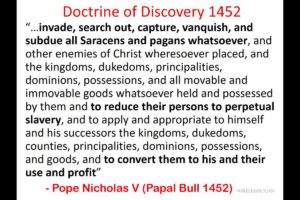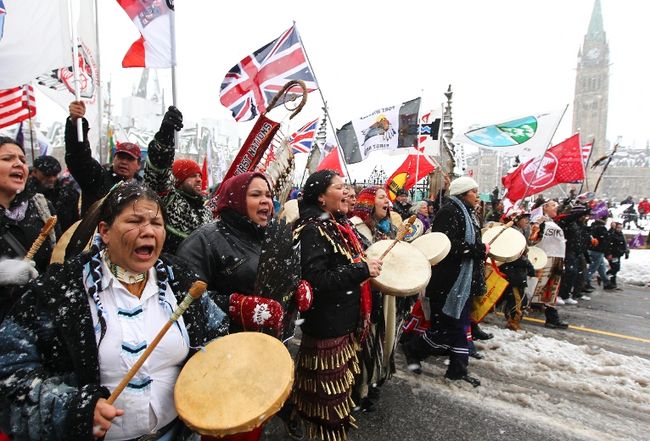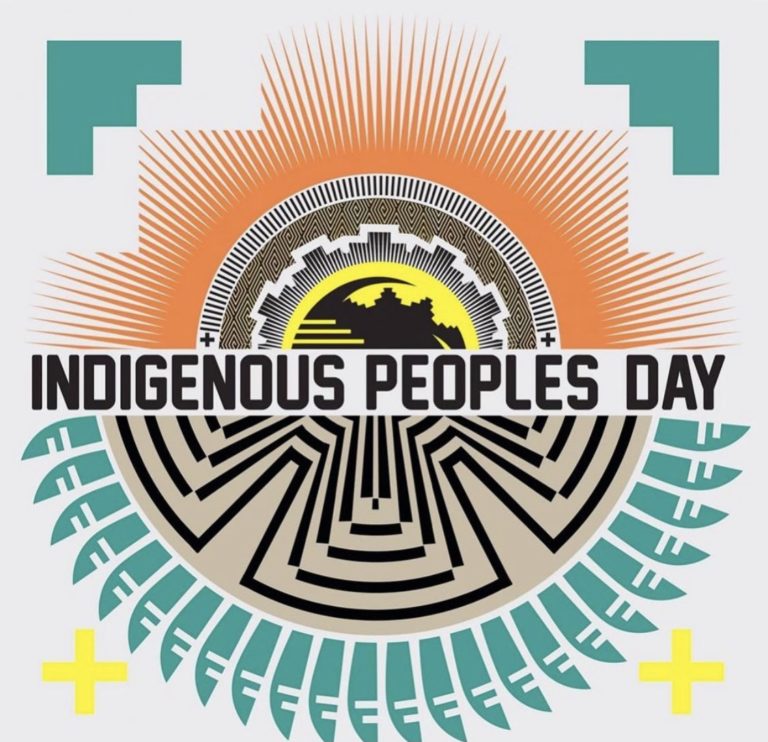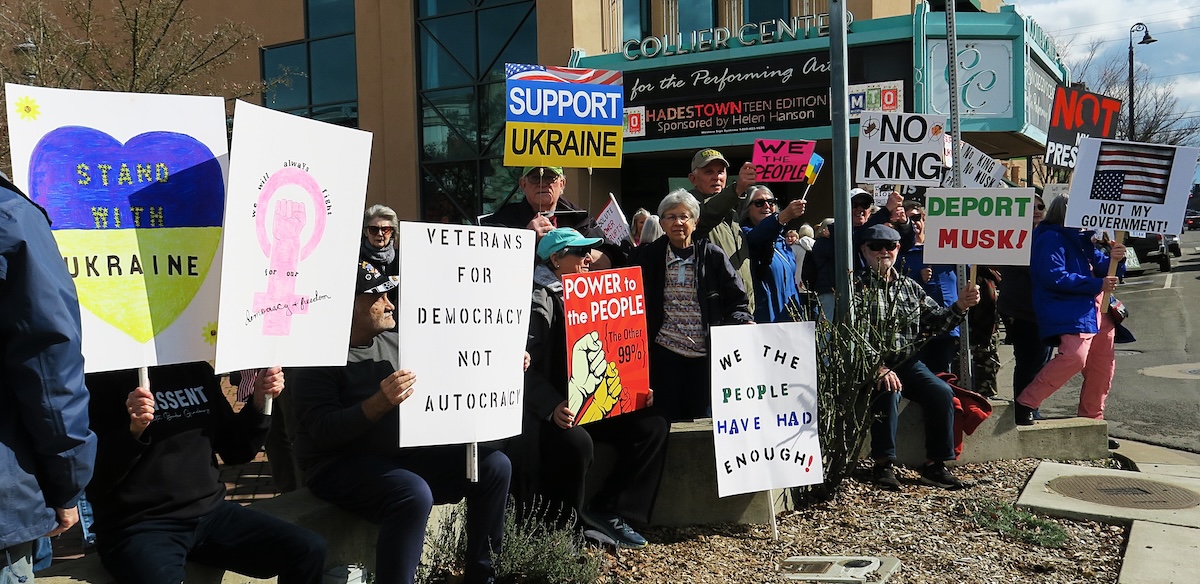A reflection on Indigenous Peoples’ Day, by Jim Phillips
When I was a boy growing up in Rhode Island, October 12 was designated as
Columbus Day, and it was a state holiday. The reason why Rhode Island made an
official fuss about Columbus was that he was an Italian who “discovered” America while
on contract to the Spanish monarchs. Rhode Island had a large Italian-American
population that honored Columbus as a native son. It was a case of ethnic identity, or
identification. When I entered graduate school at Brown University (also in Rhode
Island), I became aware that there was a sizable population of Native Americans in
southern New England. Brown University itself was a testimony to the presence of both
Native peoples and African slavery. The university’s founders in the eighteenth century
made their money in the rum and slave trade before and after the American Revolution.
Brown anthropologists had been involved in the historical excavation and recreation of
Plymouth Plantations, the supposed setting for the first Thanksgiving and the friendly
meeting of local tribes and the Pilgrim colony. I learned that this history, too, was not
quite that simple. I became aware that at Plymouth Rock—the fabled location where the
Pilgrims first set foot on the Massachusetts shore—Native peoples came every
Thanksgiving Day to engage in a day of mourning. For native people, there was nothing
to celebrate. Instead of thanks, loss and mourning. Now, Indigenous Peoples Day is
celebrated at this time of year, instead of Columbus Day. Things have perhaps changed
a bit, but not enough.
I also learned from my grandmother that she and I were close descendants of Innu
people, the Native people of Quebec. And so, some of my immediate ancestors were
Indigenous people and some were European, from Ireland and Poland, immigrants
seeking a better life away from the British and Russian empires that dominated their
countries. But in America, European immigrants had a long history of robbing land and
resources from Indigenous tribal people, killing, enslaving and reducing Native people
out of fear and greed.
Later, the new nation of the United States waged war against
tribal people to the west, and appropriated and trivialized tribal symbols and names.
Many of us in both North and Latin America are the living descendants of such a
conflicted history, with a complex identity. I contemplate this often.
 The Doctrine of Discovery promulgated by Pope Alexander V in 1493 declared that a
The Doctrine of Discovery promulgated by Pope Alexander V in 1493 declared that a
Christian monarchy (in that case, Spanish) that planted its flag and the cross in a non-
Christian place could claim it and its people as subject, since the highest good was to
christianize the “pagans” of the world. This provided the theological rationale for the
“conquest” of Latin America. The doctrine was then secularized and appeared as the
idea that white, “civilized” Christian nations could declare their dominion over non-white,
less “civilized” peoples. This idea was combined with the idea that it was acceptable to
kill the Indigenous body as long as you were trying to save the Indigenous soul. There
could hardly be a more pernicious idea. The “white man’s burden” that rationalized or
even demanded European colonization of Africa was a later version. The Monroe
Doctrine also reflects the mentality of the Doctrine of Discovery.
This Christian nationalism became an integral component of American “exceptionalism,” racism,
nativism, and imperial aspirations. Its legacy also infused some of the white nationalist
and white supremacist movements in the United States in the past and into the present.
This mentality infiltrates much of our daily lives, and causes historical amnesia. That
mindset was on display, perhaps, in the occupation of the Malheur Wildlife Refuge in
eastern Oregon in 2016 by members of a movement promoting private rights to land as
against Federal authority. The occupiers claimed they were taking back the land that
was rightfully theirs. They perhaps conveniently forgot that the first occupants of that
particular section of land were Native Americans whose more recent descendants, the
Burns Paiute, were still in the area. Historical amnesia is often a characteristic of
nativism. Who is the “real” native becomes a strange question in the discourse of settler
societies and empires.
Similar claims of modern empire, dominion, and white superiority have led to a world
today in which Indigenous people everywhere are very likely to be regarded as
obstacles to development and progress, if they are considered at all. They are
criminalized and removed by force in North America if they try to defend against
fracking in Canada and pipelines in the U.S. that threaten the rivers that give life to land
and people. But they are organized with a history of resistance, symbolized for some by
Standing Rock; and they are “Silent No More.”
Indigenous people in Latin America are criminalized, imprisoned, or killed if they try to
protect their communities and lands from the frantic grab for resources that now
characterizes much of the world’s mining, logging, and export plantation agriculture. But
they are also organized and have become an increasingly powerful force. In Honduras,
the Lenca, Toupanes, Garifuna, and Miskito peoples are often seen as the front line in
defense of the country’s land, natural resources, and sovereignty against the invasion of
foreign corporations in collusion with local elites. Indigenous people are not
“environmentalists.” They are peoples whose very existence is a living contradiction to
the world that empire has fashioned and in which we still try to live. This is not an -ism,
but rather a way of life.

Indigenous people have strengths that allow them to emerge as the first defenders of
our planet’s future. Native peoples have long histories of organized struggle against
colonialism and the modern colonialism that continues to threaten their lands and
people. Native peoples have long traditions of ceremony and social and spiritual bonds
that give them strength to act together. Native peoples can also invoke the various
international laws and conventions that acknowledge their legal rights, including the
right to give or withhold their approval from any project that they think will threaten their
people, land, resources, or way of life (e.g., UN International Labor Organization
Convention 168). The criminals are the powers that ignore this, not the people who
defend it. Empire and colonialism are not past history.
Well-intended proponents of diversity and multiculturalism ask Indigenous people what
to do to be more aware and sensitive. This is important, but it should be a return, not
simply an ask. If we ask Native people to help us become more aware, we should also
be prepared to offer what we can to actively support them in the struggles they continue
to face today. Respect is one of the most important values of Indigenous life. It is a way
of life that we all can practice.


